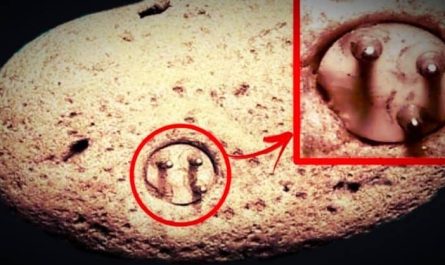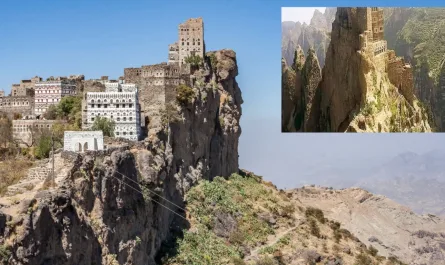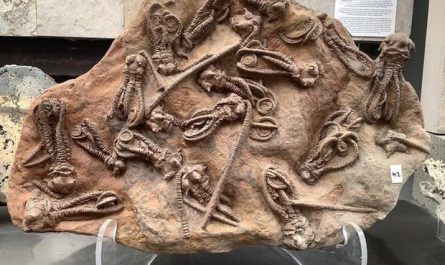The Paracas Candelabra: Peru’s Enigmatic Geoglyph of the Andes
Carved into the sandy, windswept hillside of the Paracas Peninsula in southern Peru, the Paracas Candelabra stands as one of the world’s most striking and mysterious geoglyphs. Towering approximately 180 meters (600 feet) in height and stretching nearly 70 meters (230 feet) across, this massive design, etched deeply into the earth, resembles a candlestick or candelabra, earning its name as the Candelabra of the Andes. Visible from miles out at sea, the geoglyph overlooks the Pacific Ocean, its bold lines enduring centuries of coastal weather. Despite its prominence and the intrigue it inspires, the origins, age, and purpose of this ancient creation remain shrouded in mystery, captivating archaeologists and visitors alike.
OLYMPUS DIGITAL CAMERA
A Monument Etched in Sand
The Paracas Candelabra is formed by a series of trenches, some up to 2 meters (6 feet) deep, carved into the hardened, sandy soil of the peninsula’s northern face. The design features a central vertical line flanked by symmetrical, curving lines that fan outward, creating the appearance of a three-pronged candelabra or trident. Its strategic location on a steep, north-facing slope ensures visibility from the ocean, making it a beacon for ancient mariners navigating the rugged Peruvian coastline.
The geoglyph’s preservation is remarkable, owed to the arid climate of the Paracas Peninsula, where minimal rainfall and low vegetation prevent erosion. Unlike the nearby Nazca Lines, which are best seen from the air, the Candelabra is designed to be viewed from the sea, suggesting a connection to maritime activity. Its sheer scale and precision indicate significant effort and planning, hinting at the sophistication of the culture responsible for its creation.

Mysterious Origins
The Paracas Candelabra is generally attributed to the Paracas culture, a pre-Inca civilization that flourished in the region from approximately 800 BC to 100 BC. Known for their intricate textiles, advanced ceramics, and trepanation practices, the Paracas people were skilled artisans and likely adept at large-scale projects. Radiocarbon dating of nearby archaeological sites supports this timeline, but some scholars argue the geoglyph could be older, possibly linked to earlier cultures like the Chavín (circa 1200–400 BC), or even later groups, such as the Nazca, who created the famous Nazca Lines between 200 BC and 600 AD.
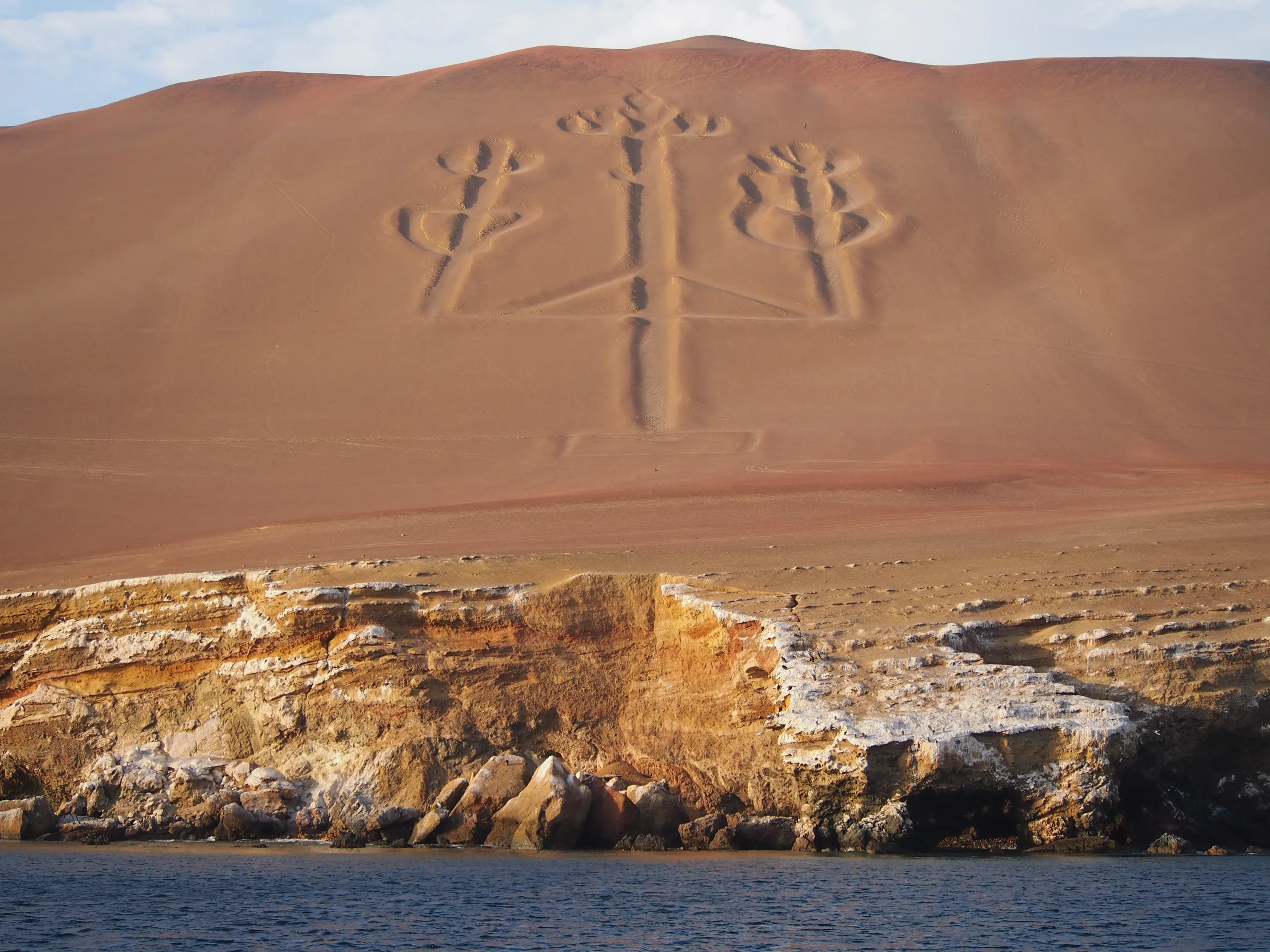
Determining the exact age is challenging due to the lack of organic material directly associated with the geoglyph. Pottery shards and other artifacts found nearby suggest a Paracas origin, but the absence of definitive evidence leaves room for debate. The geoglyph’s style, distinct from the figurative Nazca Lines, further complicates its attribution, as it lacks the animal or human motifs common in later geoglyphs.
Theories of Purpose
The Paracas Candelabra’s purpose remains one of its greatest enigmas, sparking a range of theories among archaeologists, historians, and locals:
- Navigational Aid: Its prominent position facing the Pacific Ocean suggests the Candelabra served as a landmark for ancient sailors. The Paracas people were skilled seafarers, using reed boats to fish and trade along the coast. The geoglyph’s visibility from up to 12 miles at sea could have guided mariners to safe harbors or marked key coastal routes, functioning as an early lighthouse.
- Religious or Ceremonial Symbol: The Candelabra’s trident-like shape may have held spiritual significance, possibly linked to fertility rites, water deities, or agricultural cycles, as water was vital in the arid Paracas region. Some propose it represented a sacred plant, like the hallucinogenic San Pedro cactus, used in Andean rituals, or served as a marker for ceremonial gatherings.
- Astronomical Marker: Like many ancient geoglyphs, the Candelabra may have been aligned with celestial events, such as solstices or constellations, to track seasons for agriculture or religious purposes. Its orientation and scale suggest it could have functioned as a giant sundial or star map, though no definitive astronomical connections have been confirmed.
- Territorial or Communal Marker: The geoglyph might have delineated tribal boundaries or signaled the presence of the Paracas people to neighboring groups. Its bold design could have served as a form of communication or a claim to the peninsula’s resources, visible to both land-based and maritime communities.
Alternative theories, less widely accepted, include connections to later European explorers, such as Spanish conquistadors, or even speculative links to extraterrestrial activity, though these lack archaeological support. The Candelabra’s true meaning likely lies in a combination of practical and symbolic roles, reflecting the Paracas people’s complex relationship with their environment.
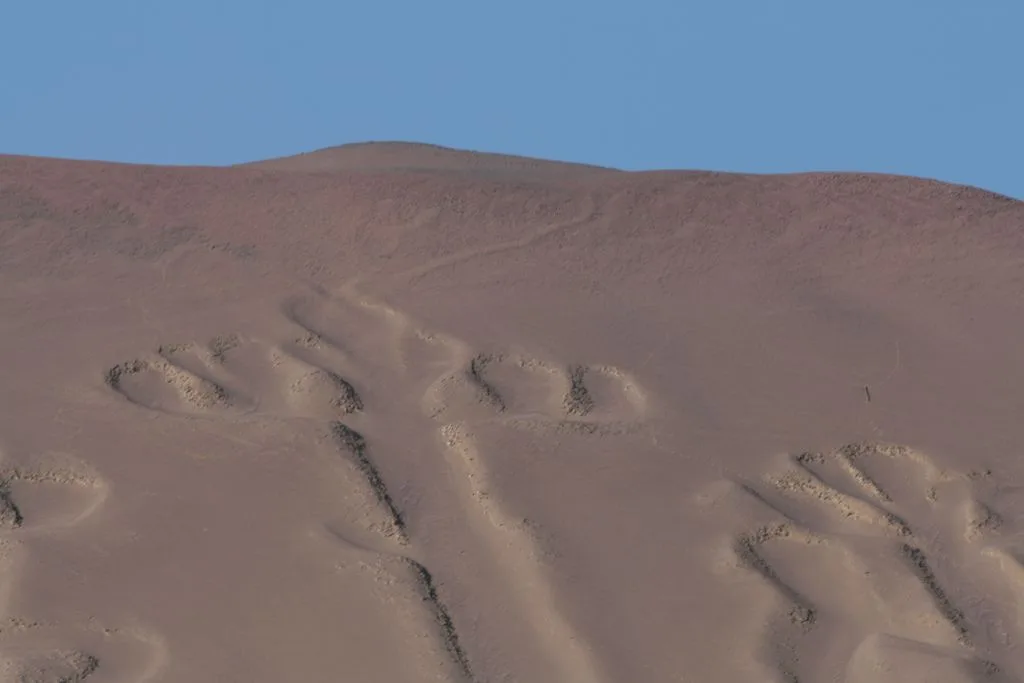
A Cultural and Natural Legacy
Discovered by modern archaeologists in the early 20th century, the Paracas Candelabra has become a symbol of Peru’s rich archaeological heritage, drawing tourists to the Paracas National Reserve, where it is protected. Its proximity to the Nazca Lines, about 200 kilometers south, invites comparisons, yet its distinct design and coastal setting set it apart. The geoglyph’s enduring visibility is a testament to the Paracas people’s engineering skill and their ability to create lasting monuments in a harsh landscape.

The Candelabra also highlights the cultural sophistication of the Paracas civilization, whose textiles and ceramics reveal a deep understanding of art, trade, and ritual. Its preservation underscores the importance of safeguarding such sites against modern threats like climate change and tourism-related damage. Efforts to study the geoglyph continue, with researchers using drones and 3D modeling to analyze its construction and context without disturbing the fragile soil.
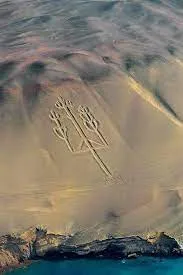
An Enduring Enigma
The Paracas Candelabra remains a hauntingly beautiful mystery, its stark lines etched against the desolate backdrop of the Paracas Peninsula. Whether a beacon for ancient sailors, a sacred symbol, or a celestial marker, it speaks to the ingenuity and vision of a people who thrived in one of the world’s driest regions. As scholars continue to probe its secrets, the Candelabra of the Andes stands as a timeless testament to human creativity, inviting us to ponder the stories carved into the earth thousands of years ago.
